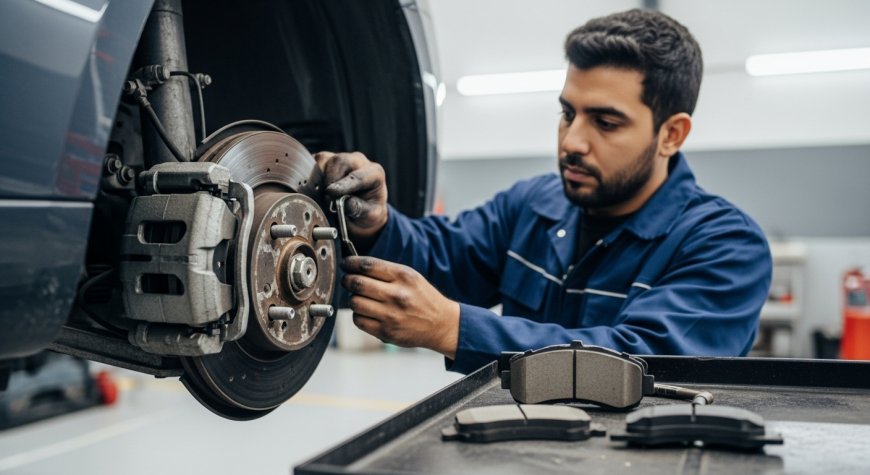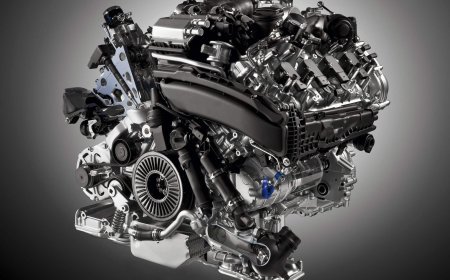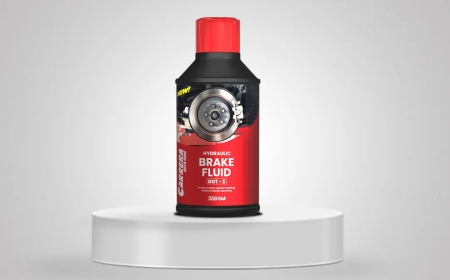Front Brake Pads Replacement: Everything You Need to Know for Safe Driving
When it comes to vehicle safety and performance, few components are as crucial as your car’s braking system. Among the various parts, the front brake pads play an essential role in stopping your vehicle effectively and smoothly.

When it comes to vehicle safety and performance, few components are as crucial as your cars braking system. Among the various parts, the front brake pads play an essential role in stopping your vehicle effectively and smoothly. Over time, these pads wear down due to constant friction and heat, requiring timely replacement to ensure you and your passengers remain safe on the road. In this comprehensive guide, well walk you through everything you need to know about front brake pads replacement, why its important, how to spot signs of wear, what the process involves, and why you should never delay this critical maintenance task.
Your cars braking system uses both front and rear brakes, but the front brakes do the majority of the work about 60% to 70% of the total braking force. This means the front brake pads naturally wear out faster than the rear ones. When you press the brake pedal, hydraulic pressure pushes the brake pads against the spinning brake rotors, creating the friction needed to slow down or stop the car. Over thousands of miles, this friction causes the brake pads to thin out, reducing their ability to generate the necessary stopping power. If neglected, worn-out front brake pads can compromise your braking efficiency, increase stopping distances, damage the rotors, and pose a severe safety risk.
Knowing when to replace your front brake pads is vital. Fortunately, your car often gives you warning signs. One common symptom is a high-pitched squealing noise when you apply the brakes. This sound comes from a small metal wear indicator built into most brake pads that alerts you when the pad material is getting low. Other signs include a grinding sound, which means the pads are completely worn down and the metal backing plate is rubbing against the rotors, which can cause expensive damage. You may also notice a soft or spongy brake pedal, longer stopping distances, or a vibration in the steering wheel when braking. In some modern vehicles, a brake warning light may illuminate on the dashboard.
When any of these signs appear, its important not to delay front brake pads replacement. Continuing to drive with worn-out brake pads can severely damage your rotors and calipers, resulting in much higher repair costs. More importantly, it increases your risk of brake failure, which can lead to accidents. Therefore, regular brake inspections are crucial, especially if you do a lot of city driving or often drive in stop-and-go traffic, which accelerates brake wear.
So, what does a typical front brake pads replacement involve? If you take your car to a professional mechanic, they will first lift the vehicle and remove the wheels to access the braking system. The mechanic will inspect the rotors to check for any grooves, scoring, or warping that may require resurfacing or replacement. Next, they will remove the caliper to take out the old, worn pads and replace them with new ones. Its also common practice to lubricate the caliper slide pins and other contact points to ensure smooth brake operation. Once the new pads are installed, the caliper is reattached, the wheels are put back on, and the mechanic may test drive the car to ensure everything works properly.
For car enthusiasts and DIYers, replacing front brake pads at home can be a manageable job with the right tools and basic mechanical knowledge. However, safety is paramount. Always use proper jack stands to support the vehicle securely and follow the manufacturers guidelines for torque specifications. Keep in mind that while changing brake pads is straightforward, improper installation can compromise your braking system and your safety. If youre unsure, its always better to have a professional handle the job.
When choosing replacement brake pads, quality matters. There are different types available organic, semi-metallic, and ceramic brake pads. Each has its pros and cons. Organic pads are softer and quieter but tend to wear faster. Semi-metallic pads offer good performance and durability but can produce more brake dust and noise. Ceramic pads, while usually more expensive, provide excellent braking performance, longevity, and minimal dust. Its wise to consult your mechanic or refer to your vehicles owner manual to select the best type for your driving style and vehicle requirements.
In addition to replacing the front brake pads, you may need to consider the condition of your brake rotors. If the rotors are worn, scored, or warped, simply changing the pads wont solve the problem. Damaged rotors can cause vibrations, reduced braking power, and uneven pad wear. Sometimes, rotors can be resurfaced if the damage is minimal, but in many cases, replacing them altogether is the best option for optimal braking performance and safety.
After completing a front brake pads replacement, its important to properly bed in the new pads. Bedding in, or breaking in, is a process that gradually transfers an even layer of brake pad material onto the rotor surface. This ensures optimal contact between the pads and rotors, leading to better braking performance and longer pad life. Bedding in usually involves a series of gentle stops from moderate speeds, followed by progressively harder stops. Always refer to the instructions provided with your new pads or ask your mechanic for guidance on this process.
Regular maintenance doesnt stop at changing the pads alone. Its good practice to check your entire braking system periodically, including brake fluid levels, brake lines, calipers, and rotors. Brake fluid should be replaced according to the manufacturers recommendations to prevent moisture buildup, which can reduce braking efficiency. A comprehensive brake inspection at least once a year or every 12,000 miles is recommended to keep your vehicles braking system in top condition.
In conclusion, timely front brake pads replacement is not just about maintaining your car; its about safeguarding your life and the lives of others on the road. Neglecting this essential maintenance can lead to costly repairs and dangerous situations that could have been easily avoided. Whether you trust a certified mechanic or tackle the job yourself, always use high-quality parts and follow proper procedures. Investing in your cars braking system today ensures peace of mind and reliable stopping power every time you hit the road. So, dont wait until you hear that squeal or feel that grind schedule your front brake pads replacement and drive with confidence.


























